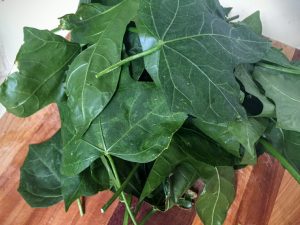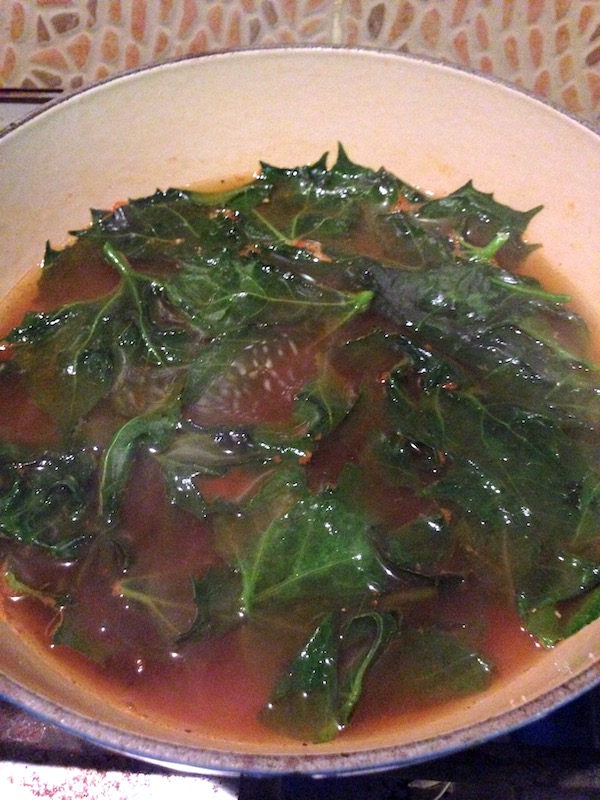Chef Erin Gomez Danielson is a founding collaborator with Frutas y Verduras Mexico. In her six years and counting as a resident of Merida, Yucatan, she has learned about local foods from her in-laws, neighbors, market vendors and from Susi Noh-Un with whom she collaborates on classes that utilize ingredients from Susi’s Mayan traditions, while engaging all – participants and teachers alike in a cultural interchange around recipes, skills and knowledge, but most of all, perspectives.
In this episode, Margret chats with Erin about the Mayan ‘tree spinach’ called chaya, how she approached a festive dish called sandwichón to impress the in-laws, and about our ‘mascot’ the zapote negro and how to transform it from humble to rich.
Find Erin at Casa Misterio on Instagram:
@casamisteriomerida

Chaya
Chaya, known in English as “tree spinach” is a hearty green leaf at the central to the Mayan diet, and ubiquitous in Yucatan and throughout the Mayan world
A Few Ways to Use Chaya
Among the many ways to use chaya, here are a couple of easy examples. Note that this green should be cooked for best digestibility, so if not adding to soup or stew, first blanch whole leaves in boiling salted water for a few minutes until softened.
Agua de chaya is ubiquitous in Yucatán – made with lime juice, water and sugar. In our CookAlongs we teach how to make it at home with honey or an alternative sweetener.
Soups or Stews: Use chaya in a soup, much as you would kale. Shred it or chop into bite sized pieces and cook for approximately same length of time as you would kale
In a marinated vegetable salad. shred the leaves and add to a bean salad, or other vegetables with a acidic vinaigrette made with citrus or vinegar
Wrapper for ‘dolmas’ Do you love stuffed grape leaves? or cabbage rolls? Try chaya as a substitute for grape leaves or cabbage.



Or use chaya to adorn a sandwichón as Erin describes in the episode!
Zapote Negro

Top, the dark green-black, withered fruits are ripe, while the green ones below will need about a week to become ripened. As you can see, not all fruits are round. Some can taper to a point at the bottom end.
Here’s a recipe for a quick pudding using zapote negro…
Cook along with us…
We explore these and other ingredients more in-depth in cookalongs, and soon in our Love For Local membership community. Curious to learn more? Sign up below and we’ll keep you posted.

